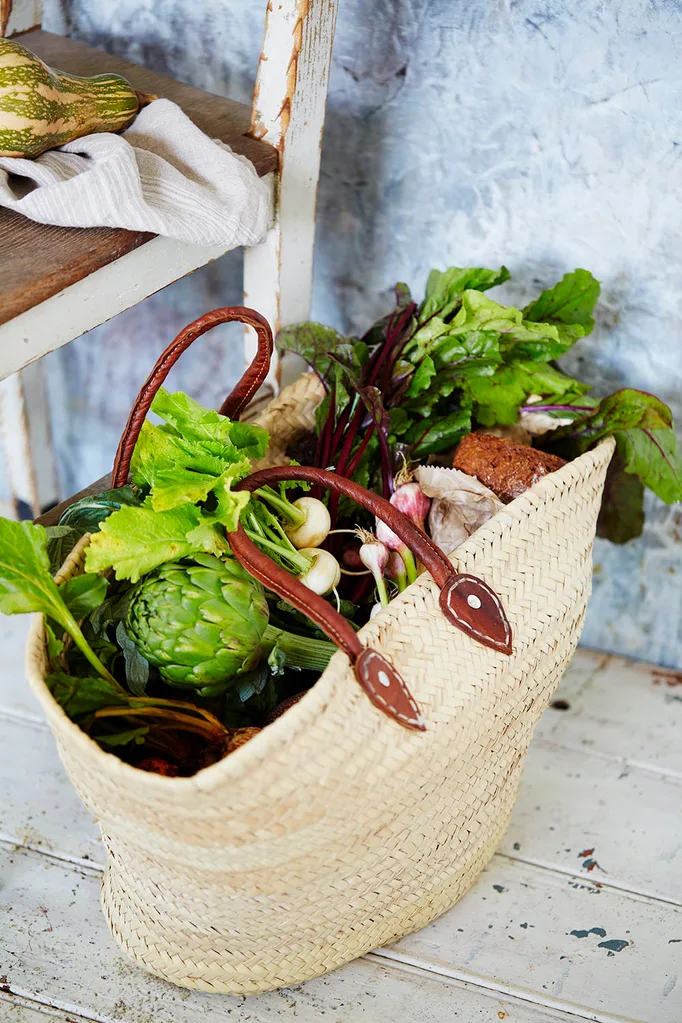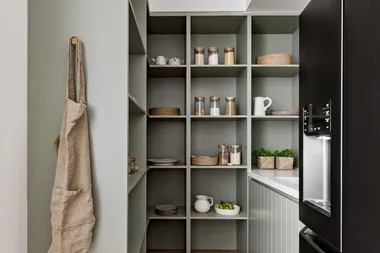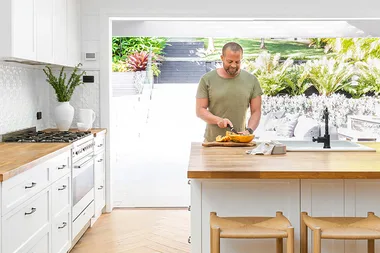Fact: the average Australian household throws out enough food to fill three full-size fridges each year. We all know how it happens: you stock up on delicious fruit and veggies on your Saturday morning markets trip, only to discard half your haul a few days later. Your basil has browned, your greens wilted, your punnet of blueberries looking, to put it mildly, not so blue anymore.
But the effects of over-filling your fridge go far beyond finding a few bendy carrots down the back of the crisper. On a global scale, if food waste were a country it would be the third biggest contributor to greenhouse gases after the USA and China, according to OzHarvest, with almost half of all fruit and vegetables produced ending up in the bin. The stats are scary, but changing them is within our control. Read on to find out how to extend the life of your fresh produce, reduce your food waste footprint and even add to your recipe repertoire in the process.
1/ Plan perfectly
Meal plans not only do away with your nightly ‘what will we have for dinner?’ dilemma, they ensure everything you buy will be put to good use. With a meal plan in place, you’re less likely to buy more than you need, filling your trolley with ‘just in case’ items that get forgotten mid-week. Instagram abounds with inspiration, thanks to savvy nutritionists and dietitians who share meal plans for all sorts of scenarios. If you’re cooking for kids, try One Handed Cooks; if not, Brown Paper Nutrition caters for more sophisticated palates with an ever-growing collection of plant-based recipes.

2/ Shop smart
Aim for a weekly shop of pantry items and other essentials, but commit to a twice-weekly shop for fresh ingredients, so that produce isn’t left languishing in the fridge for more than three to four days. Don’t have the time? One word: online. It also pays to buy what’s in season: not only is it more affordable, but seasonal produce tends to stay fresher for longer, as it has travelled shorter distances to get from the farm to your fridge.
3/ Keep your cool
The Australian Standard for fridges is 3°C, but foods require different temperatures and humidity levels to stay in peak condition, and many prefer a temperature closer to 0°C. You can position food according to the coldest compartments of your fridge (a word of warning: the door can be as warm as 8°C), or you can invest in a fridge that takes the guesswork out of preserving groceries.
The Liebherr BluPerformance SBSes 8486 side by side refrigerator, for instance, is purpose-built to extend the life of your produce and help you reduce food waste. Thanks to one-of-a-kind BioFresh technology that regulates temperature and humidity, food retains its freshness for as long as a week, nixing the need for multiple shopping trips. With six distinct cooling climates you can create the ideal environment for whatever’s on the menu: high humidity with low temperature for veggies; low humidity and an extra-low temperature for fish (see more food storage tips below). Its BioFresh drawer stores food at a perfectly chilled 0°C, while its BioFreshPlus drawer goes as low as -2°C – perfect for peace of mind when storing delicacies like seafood. Also, it boasts a dual zone wine cellar. And it would be a real crime to let anything in there go to waste…

4/ Store to prevent spoilage
For a perfectly organised fridge, arranged to maximise freshness and minimise waste, there are a few failsafe tips to follow. Always separate ripe fruit and veg from those yet to ripen, as the ethylene produced by the former can hasten the decay of the latter (the same goes for fresh flowers). Keep big bunches of herbs at their best by putting the stems in a container of water in the fridge and covering the leaves with a plastic bag (just make sure you change the water frequently to keep it fresh).
5/ Make prep a priority
Prepare those healthy snacks you have planned the second you get home from the shops, or chances are they’ll just sit there, untouched, while you reach for the quick fix of the biscuit jar instead. Peel and chop carrots into batons and slice that watermelon, then store in sealed containers in the fridge, ready and waiting for your 3pm pick-me-up. Not only will you prevent these items from going to waste, you’ll save precious fridge space too.
6/ Resist the urge…
…to order takeaway and take inspiration from the #zerowaste hashtag trending on social media. Designed to promote a waste-free lifestyle, it abounds with inspiration for utilising every last scrap of food in your fridge, often with surprisingly delicious results. Think Italian-style tarts spiked with ripe tomatoes, or wilted greens stirred into a spiced dhal – the standard bubble and squeak need not apply. One easy way to use up last night’s dinner? Plan so that, with a few tweaks, leftovers can double as lunch the next day – perhaps as a filling for wraps or rice paper rolls.










